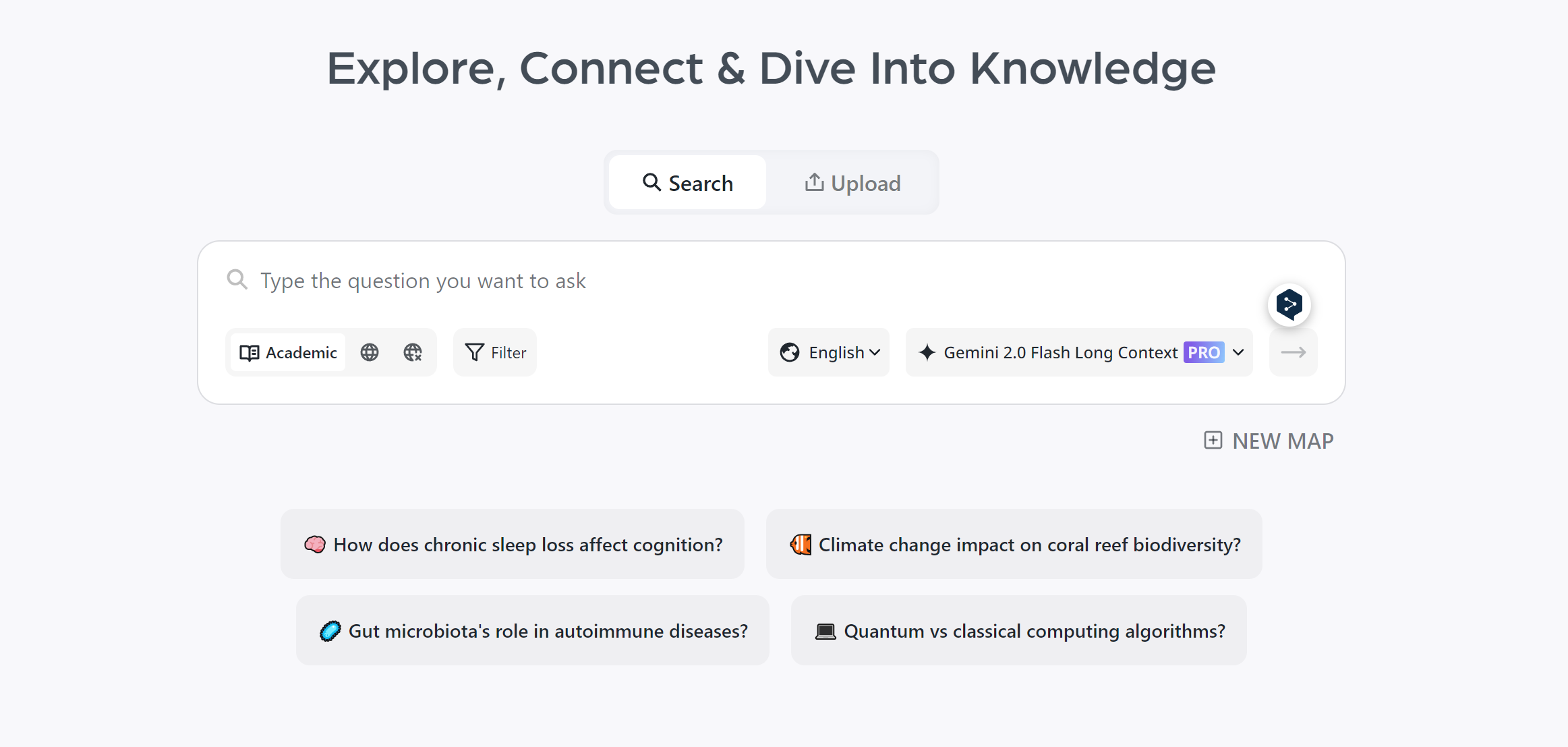
The Evolution of Research Frameworks in the Digital Era
Remember when research meant endless stacks of papers, color-coded sticky notes, and hours lost trying to find that one quote you know you read somewhere? I've been there too. The traditional research process has remained surprisingly unchanged despite our digital transformation - we read, highlight, take notes, and somehow try to connect these information fragments into cohesive knowledge.

The Limitations of Traditional Research Methods
The digital age has brought unprecedented challenges to researchers and learners alike:
Information overload: Over 2 million new research papers are published annually
Time constraints: Processing a single academic paper thoroughly can take 5-6 hours
Cognitive limitations: Our brains struggle to maintain connections across multiple sources
Knowledge fragmentation: Insights remain isolated in different documents and notes
"I spent three full weekends just organizing the literature for my dissertation proposal," a PhD student told me recently. "And I still felt like I was missing important connections."
Defining Automated Research Frameworks
Automated research frameworks represent the next evolution in how we interact with complex information. Unlike basic search tools or document readers, these AI-powered systems integrate multiple aspects of the research process.
What makes a modern automated research framework? Four essential components:
Intelligent information discovery and retrieval
Automated content analysis and knowledge extraction
Cross-document pattern recognition
Interactive knowledge organization and visualization
The shift is significant - from passive reading to active knowledge construction, from linear processing to spatial exploration, and from isolated facts to connected insights.
Key Types of Automated Research Frameworks Transforming Academia
Conceptual vs. Theoretical Automated Frameworks
When choosing an automated research framework, understanding the different types helps match the tool to your needs:
Framework Type | Primary Function | Best For | AI Enhancement |
|---|---|---|---|
Conceptual | Maps key concepts and relationships | Understanding "what" questions and organizing existing knowledge | Automatically identifies and connects concepts across documents |
Theoretical | Tests explanatory models | Answering "how" and "why" questions | Suggests potential causal relationships and identifies evidence gaps |
Methodological | Structures research approach | Designing research procedures | Compares methodologies across similar studies |
Operational | Guides practical implementation | Applied research and development | Identifies best practices and implementation patterns |
Ponder combines elements of all four types, with particular strength in conceptual frameworks through its knowledge mapping technology.
Operational Frameworks for Practical Research Applications
The practical application of automated frameworks varies widely across disciplines:
In literature reviews: AI identifies patterns, contradictions, and gaps across hundreds of sources
In qualitative research: Automated coding suggestions speed up thematic analysis
In quantitative studies: Framework tools help visualize relationships between variables
In mixed methods research: Hybrid frameworks integrate findings across methodologies
Essential Automation Tools Revolutionizing Research Processes

Document Analysis and Knowledge Mapping Technologies
The core technology driving modern research automation is advanced document analysis. Here's how these tools transform the research process:
Smart uploading and processing: One-click PDF uploads that convert dense text into structured data
Semantic parsing: Technology that understands not just keywords but concept relationships
Knowledge visualization: Converting linear text into spatial knowledge maps
Interactive exploration: Allowing researchers to navigate complex information naturally
Ponder's approach stands out by making this process seamless - papers are transformed into structured knowledge that you can interact with, making it 10x faster to grasp key ideas.
Multi-Document Comparison and Pattern Recognition Tools
The true power of automated frameworks emerges when working with multiple documents. Traditional approaches required you to manually cross-reference information - a time-consuming and error-prone process.
Modern tools like Ponder enable:
Side-by-side concept comparison across multiple papers
Automatic identification of agreement and disagreement on key topics
Discovery of relationships that might remain hidden in linear reading
Building knowledge structures that grow more valuable over time
Implementing Automated Research Frameworks in Academic Settings
How Graduate Students Leverage Research Automation
For graduate students facing overwhelming reading lists and tight deadlines, automated frameworks offer particular benefits:
"I uploaded 25 papers on climate adaptation policies that would have taken weeks to process manually," shares a Masters student in Environmental Science. "Ponder identified the key methodological approaches, findings, and gaps in three hours. My literature review essentially wrote itself."
The efficiency gains are transformative:
Literature reviews completed in days instead of weeks
More comprehensive understanding of the research landscape
Improved ability to identify original contribution opportunities
Enhanced knowledge retention through spatial learning
Research Faculty Adoption of Automated Frameworks
Senior researchers and faculty members report different but equally valuable benefits:
"I use automated frameworks to maintain awareness across a much broader range of topics than was previously possible," notes a professor of cognitive science. "I'm spotting cross-disciplinary connections I would have missed before."
Faculty particularly value:
More efficient research team collaboration
Easier onboarding of new graduate students
Comprehensive literature coverage for grant applications
Integration of findings across multiple research projects
Automated Research Frameworks in Professional Knowledge Work

Beyond academia, professionals across industries are adopting these tools to handle complex information challenges:
Financial analysts use them to process earnings reports and market trends
Healthcare professionals synthesize medical research and clinical guidelines
Legal researchers process case law and identify precedent patterns
Policy analysts map stakeholder positions across multiple documents
"The difference is night and day," reports a market intelligence director. "We're analyzing three times the information in half the time."
The Future of Automated Research Frameworks
Integration with Emerging Technologies
The evolution of research automation is accelerating through integration with:
Specialized AI models trained on domain-specific literature
Augmented reality interfaces for immersive knowledge exploration
Collaborative platforms that enable real-time research partnerships
Predictive analytics that suggest next research directions
Choosing the Right Automated Research Framework for Your Needs
When evaluating which research automation framework fits your needs, consider:
Your research goals: Are you exploring a new field, conducting a systematic review, or developing original theory?
Learning style: Do you prefer visual learning, textual information, or interactive exploration?
Collaboration needs: Will you be sharing research with team members?
Technical comfort: How much complexity can you manage in your workflow?
Knowledge permanence: Do you need temporary answers or permanent knowledge structures?
Conclusion
The transformation of research through automated frameworks represents more than just efficiency gains - it's changing how we learn, think, and create knowledge. By automating the mechanical aspects of research, these tools free our cognitive resources for what humans do best: creative thinking, critical evaluation, and generating original insights.
For researchers navigating today's information landscape, tools like Ponder offer a compelling new approach - turning information overload into structured knowledge, isolated facts into connected understanding, and overwhelming complexity into manageable exploration.
The future of research isn't just faster - it's fundamentally smarter. And it's already here.